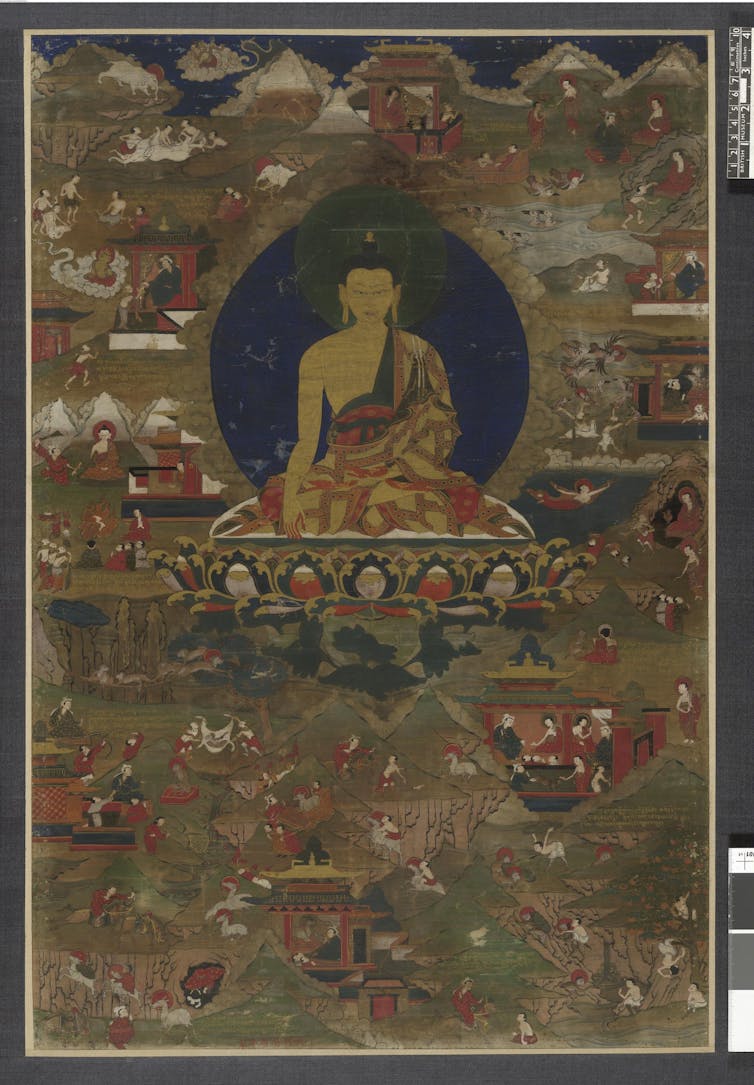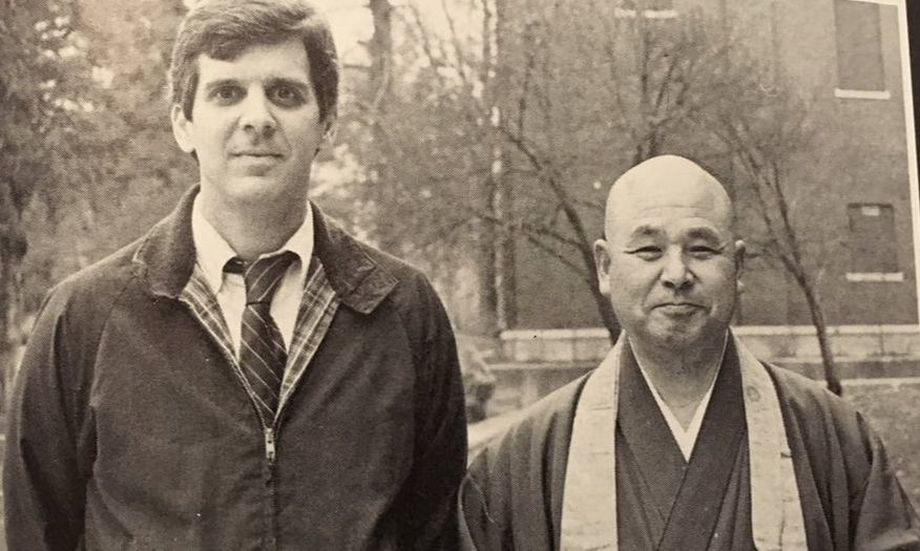
Paul F. Knitter, author of Without Buddha I Could Not Be a Christian, is Paul Tillich Professor of Theology, World Religions and Culture at Union Theological Seminary in New York City. He is a leading advocate of globally responsible interreligious dialogue and author of more than 10 books on the subject. In this, his newest book, he writes very personally, sharing his struggles with his Christian faith while relating how his study of Buddhism -- and his own Zen practice -- has helped him through this struggle.
NCR readers familiar with Buddhism or other Eastern practices and religions will find this book both refreshing and rewarding. It is unusual for a Catholic theologian to write as personally as Knitter has done in this book. I spoke with him recently about his Catholic faith and the Buddhist thought and practice that have entered into his thinking and life as he has worked in the field of interreligious dialogue.
Fox: Do you consider yourself to be a Christian?
 Knitter: Oh, I definitely do. I was born a Catholic in Chicago, grew up and entered the seminary. I consider myself to be a Christian, especially in its Roman Catholic form.
Knitter: Oh, I definitely do. I was born a Catholic in Chicago, grew up and entered the seminary. I consider myself to be a Christian, especially in its Roman Catholic form.
Would you say that you’re a Buddhist Catholic or a Catholic Buddhist?
Definitely the noun is Catholic or Christian; the adjective is Buddhist. My primary identity is Christian.
As a Catholic theologian, what is your relationship officially with the church?
I think I’m a pretty reputable member of the Catholic Theological Society of America. I’m a practicing Catholic. My relationship with the church is, as far as I can judge, good.
To be straightforward and honest, I have received some general admonitions from Pope Benedict when he was Cardinal Joseph Ratzinger. In a book on dealing with other religions, he mentioned me as one of the people who represent a tendency that could easily slip into relativism. I’m working in an area that is quite controversial, namely how Christianity can understand itself in the light of other religions.
In your book you speak of “double belonging.” Just what does that mean?
Double belonging is being talked about more and more now, both in the theological academy and in the area of Christian spirituality. I think it’s the term that is used when more and more people are finding that they can be genuinely nourished by more than one religious tradition, by more than their home tradition or their native tradition.
How widespread is double belonging?
I wouldn’t say it is for general consumption, but in areas of Europe and North America, I think that the number of people who are serious about practicing their faith are finding that some degree of double belonging is becoming more and more a part of their lives.
Why such a broad interest today in Buddhism among Christians?
There’s no one answer. In the book, I quote a friend of mine, Fr. Michael O’Halloran, who is formerly a Carthusian monk and now a priest here in the New York archdiocese. He is also a Zen teacher. Michael once told me that Christianity is long on content but short on method and technique. So I think Buddhism is providing Christians with practices, with techniques, by which they can enter more experientially into the content of what they believe.
What are the needs among Christian believers that you think Buddhism is addressing?
I hope I’m not generalizing here too much, but I think a lot of it has to do with the dissatisfaction that many of us Christians feel with a God who is all out there, a God who is totally other than I, the God who stands outside of me and confronts me. I think we’re searching for ways of realizing the mystery of the divine of God in a way in which it is more a part of our very selves.
I think Christians are searching more for a way of experiencing and understanding God in a unitive way, or what I say in the book is a “non-dual way,” where God becomes a reality that is certainly different than I am, but is part of my very being.
Buddhism does not affirm the existence of God. It has been described as an “atheistic” religion. How can it have significance for a theistic religion like Christianity?
We’ve got to be really careful with how we use the term “atheistic.” Clearly Buddhism does not affirm the existence of a personal God, but I think the better term would be “non-theistic” rather than “atheistic.” It’s not denying God, but if I may put it this way, the Buddha and so much of Buddhism is much more concerned with experiencing ultimate reality rather than defining and naming it.
When you ask a Buddha, “What is it that you are part of when you are enlightened, or when you experience nirvana?” one of the terms or images that are used is sunyata, which means emptiness. That’s not a very good translation but it’s the word they use to identify that ultimate reality is not an entity, a being, but rather it is what they call the interconnectedness of everything. Or as the Vietnamese monk Thich Nhat Hanh uses the term for ultimate reality, “interbeing.”
Buddhism has helped me to rediscover, to deepen what it means when, in the New Testament -- maybe it’s the only definition of God that we find in the New Testament -- when it says that “God is love.”
I think what Buddhism means by “interbeing” helps me appropriate what in our Christian terminology we mean when we say divine reality is love, and then that sets the stage for me -- and I think for many Christians -- for reappropriating one of our central symbols for God, spirit.
So for me now when I say the word God, what I image, what I feel, thanks to Buddhism, is the interconnecting spirit -- this ever-present spirit, this ever-present, interconnecting energy that is not a person, but is very personal, that this is the mystery that surrounds me, that contains me, and which I am in contact with in the Eucharist, in liturgies, and especially in meditation.
Buddha was enlightened; Jesus was divine. That’s a big difference, isn’t it?
Yes. It’s a big difference. When one looks at, first of all, the language that we Christians use to talk about the mystery of Jesus the Christ, perhaps the two primary words that we use -- or doctrines that we attest to -- are Jesus is Son of God and Jesus is Savior. Now those two terms, Son of God, Savior, are beliefs. These expressions are our attempt to put into words what is the mystery of God.
All of our words are our efforts to try to say in words what can never be fully said in words. In other words, we’re using symbols, we’re using metaphors, we’re using analogies. This goes straight back to St. Thomas Aquinas and to my teacher, Karl Rahner. All of our language is symbolic.
So when the Catholics say that Jesus came to save us, we are not saying just that?
We’re saying something that is very true, something that tries to express what we have experienced, but we can never capture the full reality of it in those words. Again, to use the Buddhist image that is often used, our words are like fingers pointing to the moon -- not the moon itself. Words can never be fully identified with the reality that they are indicating.
You write that Catholics need an eighth sacrament. Explain that.
This has been perhaps one of the key elements that I and many others have learned from Buddhism: the importance of silence. It is in some form of meditation we recognize that the mystery of God is something that cannot be appropriated simply by thought.
This fits into our Catholic sacramental theology. We say that every sacrament contains matter and form. So the matter in the sacrament of silence is our breath, being aware of our breath, being one with our breath, doing nothing else but breathing.
A number of times in the book, you quote Thich Nhat Hanh, the Vietnamese monk. You write, echoing Nhat Hanh, that in order to make peace, we have to be peace. Reversing Pope Paul VI’s statement, you state that if we want justice, we have to seek peace. Is that right?
My wife and I spent much of the ’80s and the ’90s working in El Salvador for peace during the war. So we have been activists throughout our lives -- peace activists, social activists. But when I look back at that activism I am aware of how so often our actions were filled with a certain verbal violence.
We had to resist, we had to confront the evil structures. And there are evil structures, but something was missing for me. What was missing was captured in an experience I had back in 1986 or ’87 when I did a Zen retreat with Roshi Bernie Glassman.
I said to him during this retreat that we were going down to El Salvador to try to do something to stop the terrible death squads. He said: “Right, you have to stop the death squads, but you also have to meditate because you will never stop the death squads until you realize your oneness with them.”
That is the experience that Buddhism calls us to, this deep, personal experience of our interconnectedness with all beings, even those whom we have to oppose as oppressors, as perpetrators of evil. We are one with them. This is what Thich Nhat Hanh means when he says that we have to be peace within ourselves. We have to overcome our egos and realize our connectedness with all beings.
You’ve written, “For Buddhists, selfishness is not so much sinful as it is stupid.” Explain.
This is an aspect, I think, that is especially appreciated, or needed, by many Christians. For Buddhism, and I would want to say for Catholicism as well, our fundamental nature is good. Our fundamental nature is the Buddha nature, namely we are part of the interconnected whole, called to be aware of it, and to act out of compassion.
But our problem is that we are not aware of this. Because we’re not aware of this, because we think we are separate individuals rather than part of the interconnected whole, we think we have to protect ourselves. We think we have to gain things in order to establish our identity and, therefore, we act selfishly. We’re acting selfishly, not because we are fallen, not because we are evil in our natures, but because we are ignorant.
You’ve written that in the future, Christians will be mystics or they will not be anything at all. What do you mean?
That is a loose quotation from my teacher, Karl Rahner. What he was getting at is this: There are so many challenges and so many difficulties that we face that unless our identities are based on our own personal experience of God, as part of them, of Christ, as their very being, they are not going to be able to find the strength and the stamina and the wisdom to hang in there.
You’ve written that Buddhism has helped you peer into the mystery beyond death. What about death and life afterwards?
That was perhaps, for me, the most helpful, but maybe the most controversial part of my book. Buddhism tells us that here in this life our true identity, our true happiness, is to move beyond our individuality. I think that resonates with the word, “Unless a grain of wheat genuinely falls into the ground and dies, it will not bear fruit.” Buddhism has led me to look more deeply into what that passage means or what Jesus means when he said, “You will not find yourself unless you lose yourself.”
This has brought me to recognize something that for me seems to be more satisfying, namely that the life that awaits me after I die is going to be an existence that is going to be beyond my individual existence as Paul Knitter. I will live on, but I will not live on probably as Paul Knitter. In other words, our life in the future life after death is a form of existence that is beyond individuality. That doesn’t mean we’re annihilated; that doesn’t mean we don’t exist, but we will exist in a totally transformed, trans-individual existence.
[Thomas C. Fox is NCR editor and can be reached at tfox@ncronline.org.]


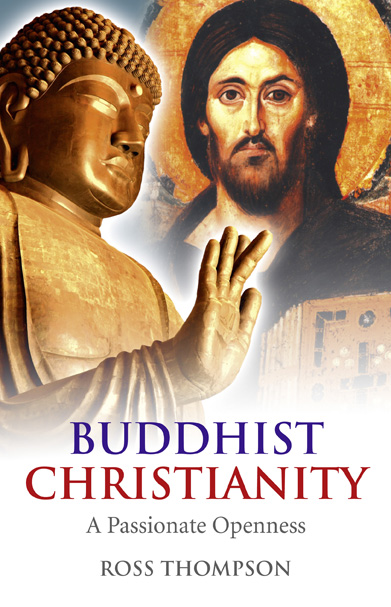


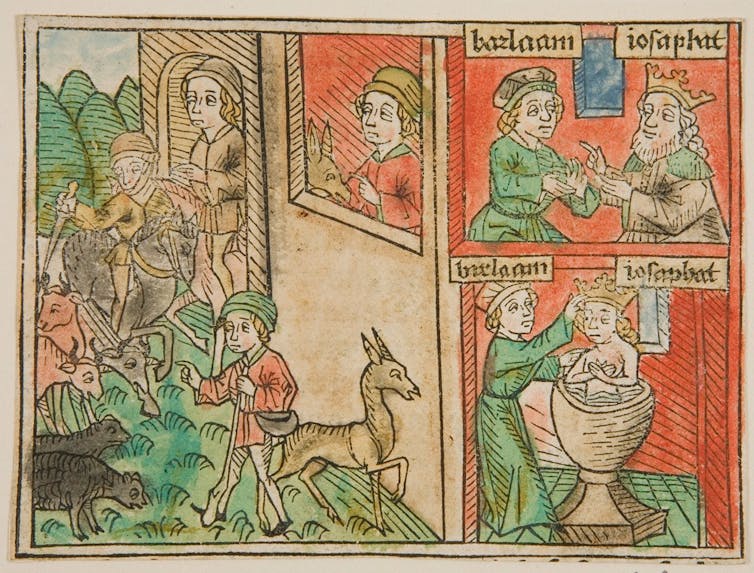
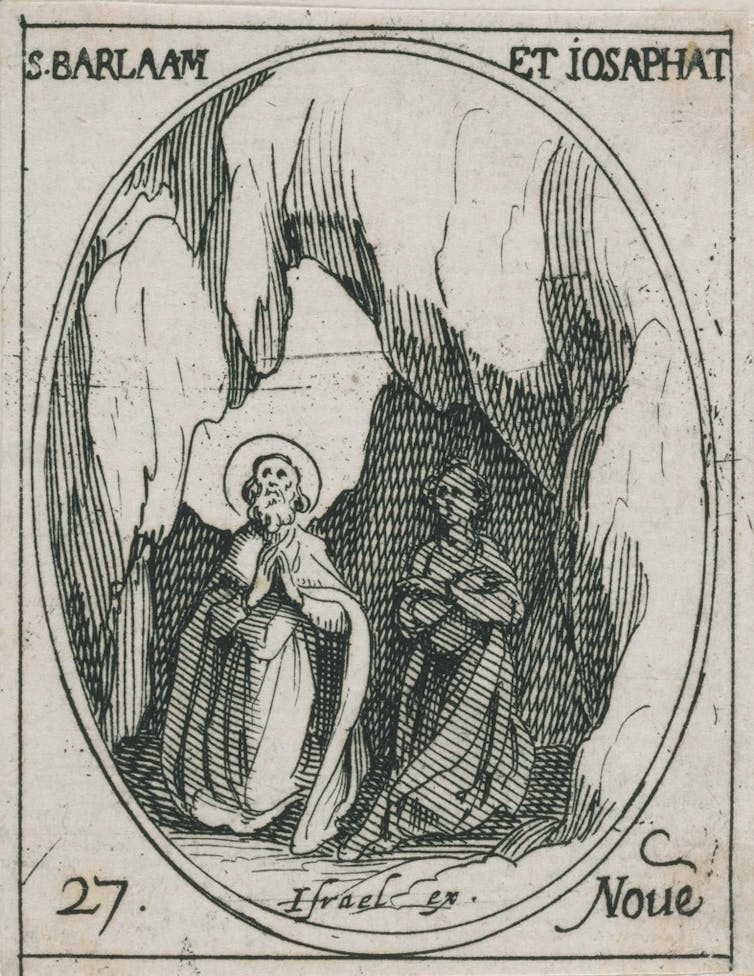
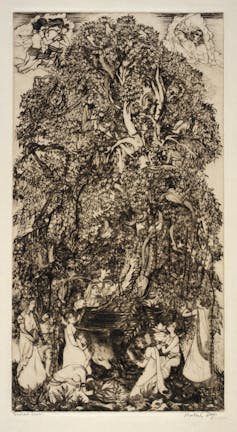 The Sacred Bodhi Tree.
The Sacred Bodhi Tree. 